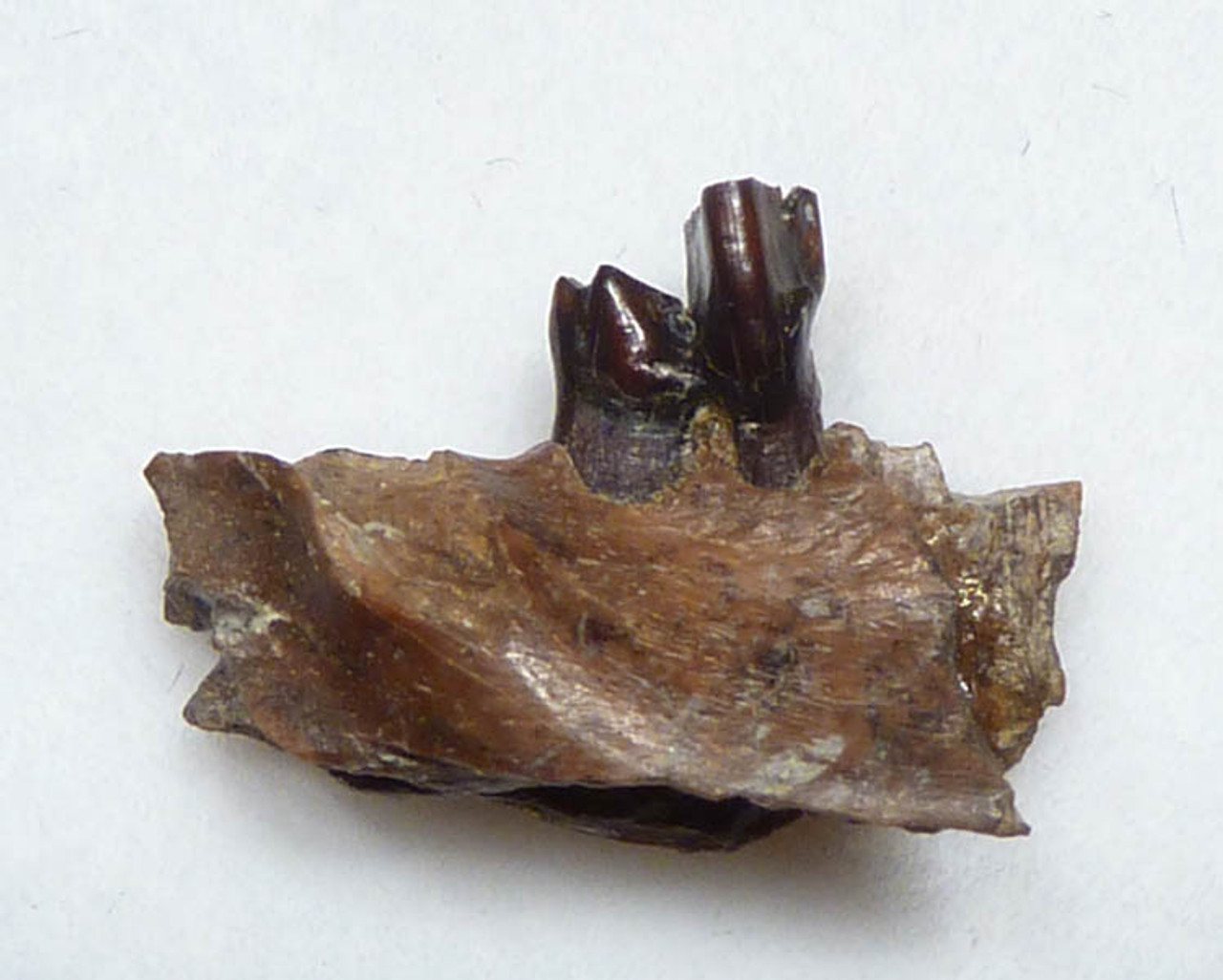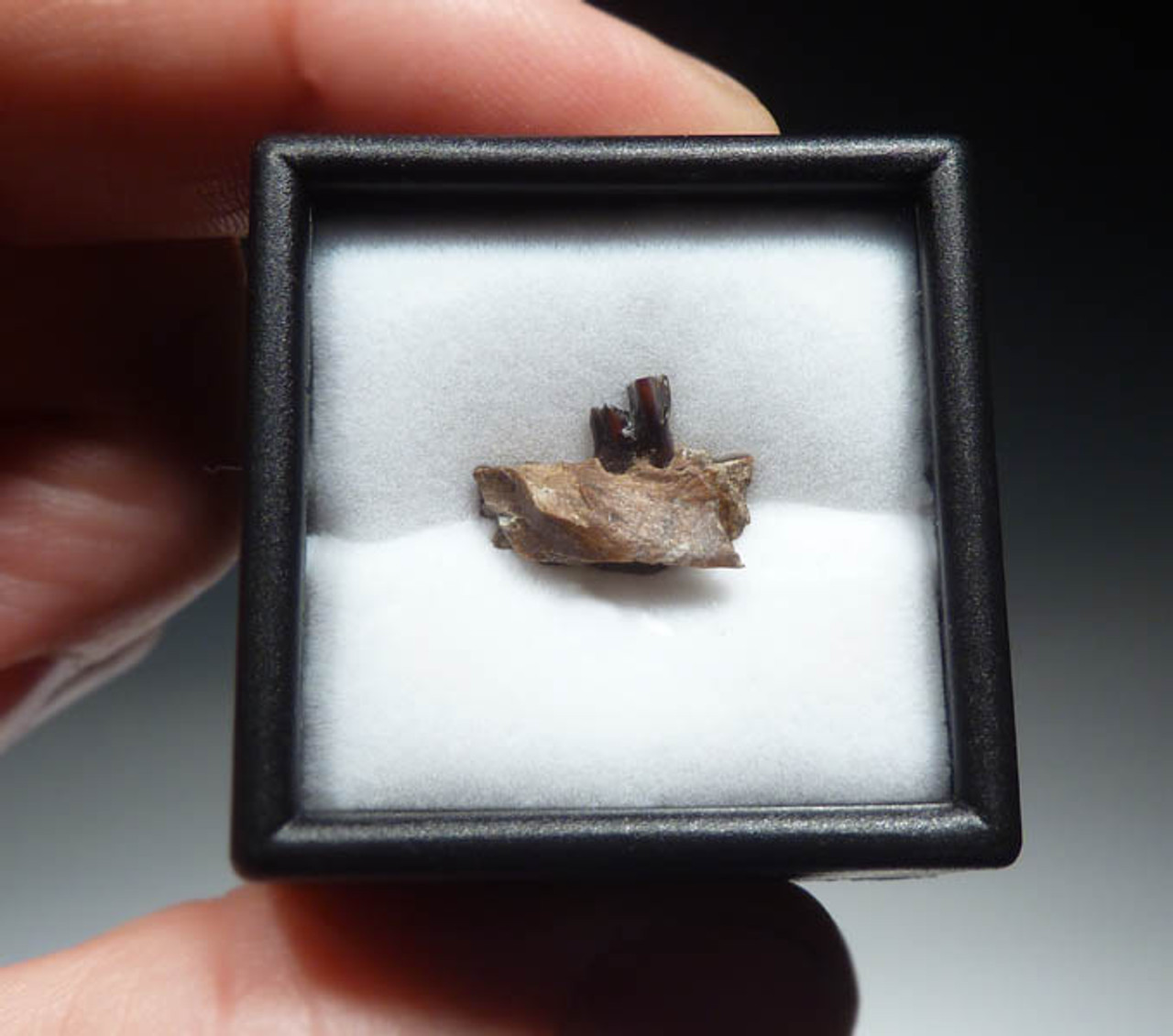Product Description
SEE MORE MESOZOIC MAMMAL FOSSILS
From the Upper Cretaceous deposits of the famous Hell Creek dinosaur beds, this is a partial fossil mandible with two molars from an early, dinosaur-era metatherian marsupial mammal called Didelphodon. Complete isolated teeth from these tiny Mesozoic mammals are rare enough but the discovery of a partial or complete mandible with original teeth still attached is far more rare than finding a single tooth. Fossils like this require incredible collecting and microscope examination time to locate fine specimens like this. While very tiny indeed, this fossil specimen is exceedingly rare and specimens such as this are seldom found in private ownership. A fantastic specimen to display alongside dinosaur fossils offering an educational and intriguing addition to any collection.
When most people think of the Mesozoic Period, they envision the Earth crawling with all types of reptiles and dinosaurs. The underdogs of this time were the small mammals that emerged and scampered about beneath the feet of some of the planet's largest dinosaurs that ever lived. They also likely scavenged on the carcasses of Tyrannosaurus rex's prey and were most probably prey themselves to many of the smaller dinosaurs including the famous dromaeosaurs ("raptors"). Mesozoic mammal fossils are important remnants in exhibits and collections to fully paint a picture of the varying fauna of the Earth during the days of the dinosaurs. Most fossil collections lack Mesozoic mammal fossils because of their extreme rarity because they are small making them difficult to locate. Another reason for their rarity is the fact that they are fragile, making them rare to survive the fossil process.
 US DOLLAR
US DOLLAR
 EURO
EURO
 AUSTRALIAN DOLLAR
AUSTRALIAN DOLLAR
 CANADIAN DOLLAR
CANADIAN DOLLAR
 POUND STERLING
POUND STERLING






